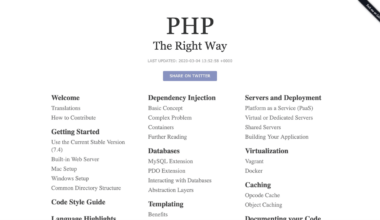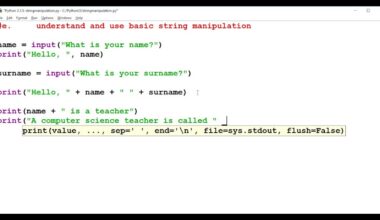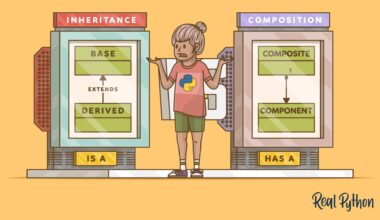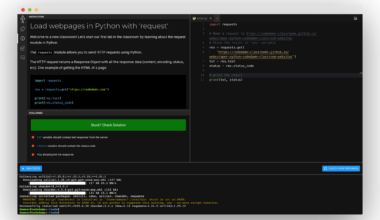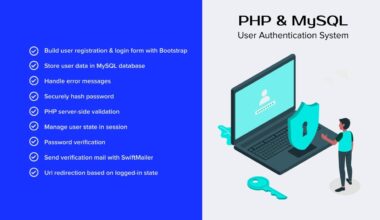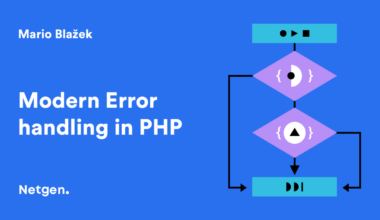Introduction to PHP API Development
As technology continues to advance, businesses and organizations need to find more efficient ways to communicate with each other. One solution to this problem is through the use of APIs, or Application Programming Interfaces. APIs allow two different applications to communicate with each other seamlessly, without the need for manual input.
PHP API Development is the process of creating APIs using the PHP programming language. PHP is a popular choice for API development due to its flexibility, scalability, and ease of use. With PHP, developers can create robust interfaces that can be used to connect different applications and systems.
APIs can be built using different architectural styles, but one of the most popular is RESTful APIs. REST, or Representational State Transfer, is a set of principles used to create scalable, reliable, and maintainable web services. RESTful APIs are designed to be lightweight, easy to use, and highly scalable.
Creating a robust API with PHP requires careful planning and consideration. Developers need to think about the different endpoints that their API will have, as well as the data formats that will be used. They also need to ensure that their API is secure, scalable, and easy to use.
Testing and debugging APIs is also an essential part of the development process. Developers need to test their APIs thoroughly to ensure that they are working correctly and responding to requests in a timely manner. They also need to debug any errors that occur to ensure that their API runs smoothly.
In conclusion, PHP API Development is a valuable skill for any developer. With PHP, developers can create robust interfaces that can be used to connect different applications and systems. By following best practices and testing thoroughly, developers can create APIs that are reliable, secure, and easy to use.
Understanding RESTful APIs
RESTful APIs are a popular architectural style for building web services that allow different applications to communicate with each other. REST stands for Representational State Transfer, which is a set of principles used to create scalable, reliable, and maintainable web services.
RESTful APIs rely on HTTP methods to perform CRUD (Create, Read, Update, Delete) operations on resources. These operations are carried out through the use of endpoints, which are identified by URIs (Uniform Resource Identifiers). For example, if we have an API for managing user accounts, we might have endpoints such as /users for retrieving a list of all users, /users/{id} for retrieving a specific user, and /users/{id}/update for updating a user’s account information.
RESTful APIs are designed to be lightweight and easy to use. They use simple data formats such as JSON (JavaScript Object Notation) or XML (eXtensible Markup Language) for data exchange. This makes it easy for developers to consume the API from different programming languages or platforms.
One of the key benefits of using RESTful APIs is their scalability. RESTful APIs are designed to be stateless, meaning that they don’t store any client data. This makes it easy to scale the API horizontally by adding more servers to handle increased traffic.
When building a RESTful API with PHP, it’s important to follow best practices to ensure that the API is secure, scalable, and easy to use. This includes using appropriate HTTP methods for CRUD operations, properly handling errors and exceptions, and securing the API using authentication and access control mechanisms.
In conclusion, understanding RESTful APIs is an essential part of PHP API Development. RESTful APIs provide a lightweight and scalable way for different applications to communicate with each other. By following best practices and using appropriate tools and frameworks, developers can create robust RESTful APIs that are reliable, secure, and easy to use.
Building a Robust API with PHP
Building a robust API with PHP requires careful planning and consideration. Here are some tips to help you create a reliable, secure, and easy to use API:
1. Define your endpoints: Before you start coding, you need to define the endpoints for your API. Endpoints are the URLs that clients use to interact with your API. You should define the HTTP methods that each endpoint supports, as well as the data formats that will be used.
2. Use appropriate HTTP methods: RESTful APIs use HTTP methods to perform CRUD operations on resources. Use the appropriate HTTP method for each endpoint. For example, use GET for retrieving data, POST for creating new resources, PUT for updating existing resources, and DELETE for deleting resources.
3. Use proper error handling: Errors are an inevitable part of any API. Make sure to handle errors properly by returning appropriate error codes and messages. Use the appropriate HTTP status codes for each error.
4. Secure your API: APIs can be a security risk if not properly secured. Use appropriate authentication and access control mechanisms to ensure that only authorized clients can access your API. Use HTTPS to encrypt all data transmitted over the network.
5. Use caching: Caching can significantly improve the performance of your API. Use caching to store frequently accessed data in memory or on disk. This will reduce the load on your database and improve response times.
6. Document your API: Good documentation is essential for any API. Document your endpoints, data formats, error codes, and authentication mechanisms. Use tools like Swagger or Postman to generate documentation automatically.
7. Test your API: Testing is an essential part of API development. Use tools like Postman or PHPUnit to test your API thoroughly. Test your API under different load conditions to ensure that it can handle high traffic.
By following these best practices, you can create a robust API with PHP that is reliable, secure, and easy to use. Use frameworks like Laravel or Symfony to simplify API development and reduce development time.
In conclusion, building a robust API with PHP requires careful planning, proper coding techniques, and thorough testing. By following best practices and using appropriate tools and frameworks, developers can create APIs that are reliable, secure, and easy to use.
Testing and Debugging APIs
Testing and debugging APIs are essential to ensure that your API is reliable, performs well, and meets the requirements of your clients. Here are some tips to help you test and debug your PHP API:
1. Unit Testing: Write unit tests for each endpoint to ensure that it returns the expected results. Use a testing framework like PHPUnit to automate testing. Unit testing helps to catch errors and bugs early in the development cycle.
2. Integration Testing: Test the API with different clients to ensure that it works correctly. Use a tool like Postman to simulate requests from different clients. Integration testing helps to identify issues with the API’s data exchange formats and endpoints.
3. Load Testing: Test your API under heavy load to ensure that it can handle high traffic. Use a tool like Apache JMeter to simulate high traffic and test the API’s performance. Load testing helps to identify performance bottlenecks and scalability issues.
4. Error Handling: Test your API’s error handling by sending invalid requests and responses. Ensure that your API returns appropriate error codes and messages. Error handling testing helps to ensure that your API is robust and can handle unexpected input.
5. Debugging: Debugging is essential to identify and fix errors in your API’s code. Use a tool like Xdebug to debug your PHP code. Xdebug allows you to step through your code and inspect variables and data structures.
6. Logging: Use logging to track the flow of requests and responses in your API. Use a tool like Monolog to write logs to a file or database. Logging helps to identify issues with your API’s data exchange formats and endpoints.
7. Security Testing: Test your API’s security by attempting to exploit vulnerabilities. Use a tool like OWASP ZAP to simulate attacks on your API. Security testing helps to identify and fix security issues before they are exploited.
By following these best practices, you can ensure that your API is reliable, performs well, and meets the requirements of your clients. Use tools like Postman, PHPUnit, Apache JMeter, Xdebug, Monolog, and OWASP ZAP to simplify testing and debugging.
In conclusion, testing and debugging APIs are essential to ensure that your PHP API is reliable, performs well, and meets the requirements of your clients. By following best practices and using appropriate tools, developers can create APIs that are robust, secure, and easy to use.
Final Thoughts on PHP API Development
In conclusion, PHP API Development is a valuable skill for developers who want to create robust interfaces that can be used to connect different applications and systems. By following best practices and testing thoroughly, developers can create APIs that are reliable, secure, and easy to use.
When building an API with PHP, it’s essential to understand RESTful APIs and use appropriate HTTP methods for CRUD operations. Developers should also define their endpoints carefully and use proper error handling and security mechanisms to ensure that their API is secure and reliable.
Testing and debugging are critical parts of the development process that should not be overlooked. Developers need to test their APIs thoroughly to ensure that they are working correctly and responding to requests in a timely manner. They also need to debug any errors that occur to ensure that their API runs smoothly.
Finally, developers should use appropriate tools and frameworks like Laravel or Symfony to simplify API development and reduce development time. They should also document their API and test it thoroughly using tools like Postman, PHPUnit, Apache JMeter, Xdebug, Monolog, and OWASP ZAP.
In summary, PHP API Development is a valuable skill that requires careful planning, proper coding techniques, and thorough testing. By following best practices and using appropriate tools and frameworks, developers can create APIs that are reliable, secure, and easy to use. With the right approach and tools, developers can build APIs that facilitate efficient communication between different applications and systems, ultimately helping businesses and organizations to operate more efficiently.














